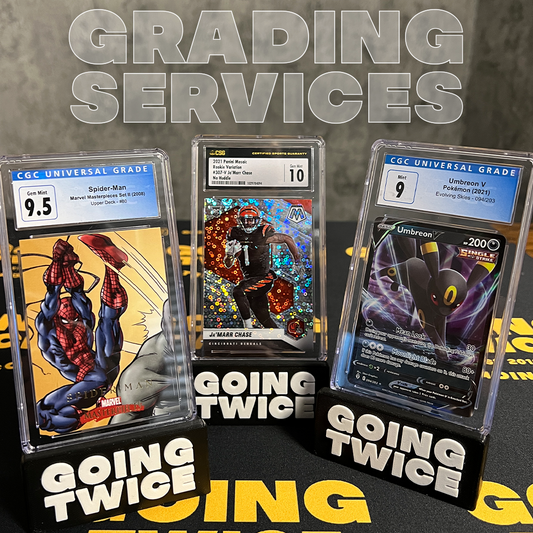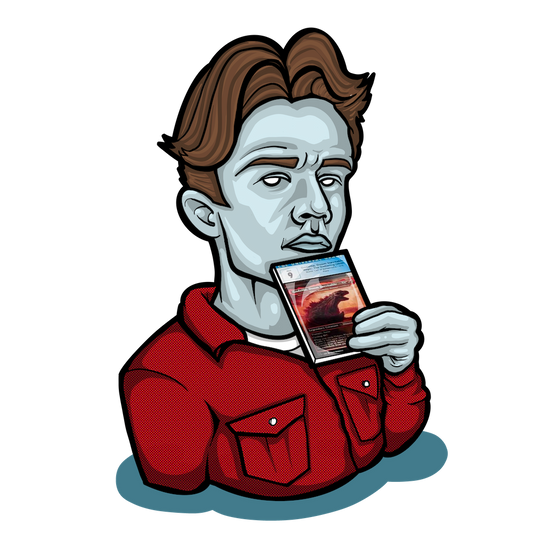The Odd, The Old, and The Fascinating
I would consider myself an avid collector. Since I was a child, I have been fixated on obtaining old stamps, coins, figurines, and of course sports and trading cards. At Going Twice, this is our world, the world of collectables of every stripe. Today I want to go back to the origins of the modern collector, when the systematic collecting of certain items, particularly those of the past, became popularized amongst people outside of the ruling class. We as humans have always had a fascination with origin, our own in particular, and through collecting we can bring together physical objects from the past to create an immediacy of a time now far gone. For trading cards like Pokemon, this can be nostalgia from childhood, for certain coins and sculptures, this is ancient history, and old tobacco baseball cards bring back the fledgling days of a United States freshly reassembled after a brutal civil war. Collectables all have their own place in time and a meaning they convey to their owners, and as we jump back to the Renaissance we will see that this has not changed since our early collectors of that time.
What happens when a bunch of people get access to literature and education? They show off to each other, obviously. The printing press allowed for the large-scale production of manuscripts which meant the ability to obtain copies of religious works, ancient texts, and new writings became much more accessible to a larger swath of people. And what better way to show your buddies that you have excellent taste and are well educated than assembling a tasteful collection of special edition printings of classics and religious texts. Older manuscripts that had been translated on the request of a patron held a particularly coveted place in a collection, as the ability to read works over a thousand years old was anything but commonplace at the time and showed the owner to be particularly well read and well rounded as a scholar. As printings became more elaborate, special editions featuring luxurious carved covers of sculpted wood became the Renaissance equivalent of chase cards, with low circulation and quite a high price tag.

Coin collectors also appeared around the same time, and here we see quite a few parallels to card collecting today. For one, the condition of the coin was very important. As ancient coins were the most prized, those in mint condition were not easily obtained and great care was taken to preserve them once purchased. Coin collectors would also complete sets, the truly ambitious and affluent ones going so far as to complete a visual history of the Roman empire through coins of each of its Emperors in chronological order. The coins were valued as visual pieces, but their connection to the past and the ideas of the men engraved upon them was paramount in importance to most collectors at the time. But, just as the big boom in 2020 led to forgers creating fake Charizards, so did the demand for ancient coins and medals create an outpouring of fake reproductions that flooded the market, some of them so convincing that even modern historians can have difficulty picking them out. Where there is demand, there will be those ready to take advantage, but these days even the fake coins now have value in their own right (but I wouldn't hold your breath for you fake charizard to appreciate any time soon).

The collecting of objects did not stay within the realm of human-made ones either, as seen in a painting from 1599 depicting a room full of natural curiosities ranging from an entire preserved crocodile to dried plants. These “cabinets of curiosities” ranged from the macabre to the scientific, and became very popular as a way to show off a worldly collection with a wide range of objects. Oftentimes there was no clear cohesion in these collections other than a certain “wow” factor that impressed the collector enough to hold on to or purchase the item. As exploration around the globe became more frenzied, odd plants and animals fascinated an ever growing merchant class who could afford to not only buy them but store and display them as well. Royalty also had their own collections of oddities from around the globe, and it was how these collections were curated that gave off a desired image of the one who had obtained and displayed them. These cabinets of curiosities, many times not a cabinet at all but an entire room, were the forerunners to our Pokecaves and memorabilia rooms we have today, except with ancient carvings and figurines, dead animals and plants, and sometimes a human skull or two. Actual cabinets were made for collectors to keep and display their collections, hence where the term cabinet of curiosities originated, and they often contained hidden drawers so as to reward only the most curious observers with finding a particularly unique or impressive item. Ultimately these collections were the private equivalent to modern day museums, and it is from these collections that some of the first public museums in the world were created from.

Why did I choose to go this far back, nerd out on collecting this hard knowing full well many of you have no interest in a history lesson? Because I think it is fascinating to see where collecting all started, where hobbies that parallel mine began and how nerds in 1450 got excited in the same way we do now. Collecting can keep the past with us in physical form, what we choose to collect can let us express ourselves in a way words alone cannot, and this was no different 600 years ago. Many of the same reasons they gathered certain items is the same reason we do today, and it is entertaining to imagine sitting slightly buzzed after a dinner in 1550, and having your host excitedly invite you to see a collection of oddities in the same way I would show off my binder. There is learning and community that binds us together in our hobbies, and over the next few weeks we are going to see how we went from fancy bibles to Yu-gi-oh and Pokemon. It is quite an adventure, see you next week!




